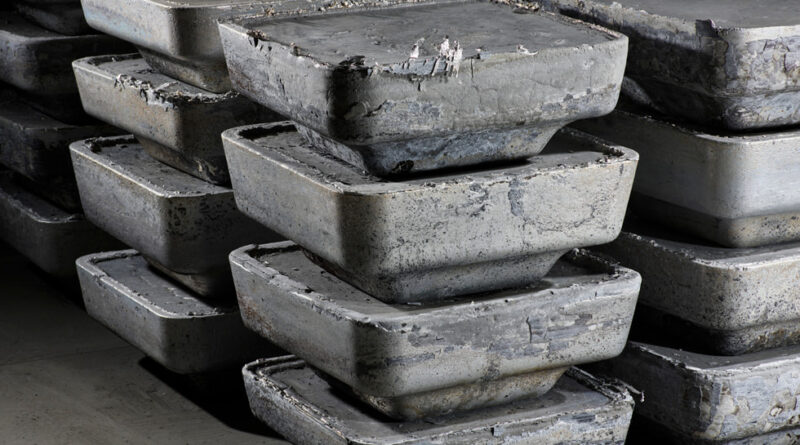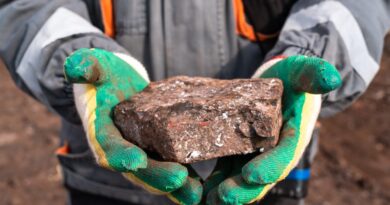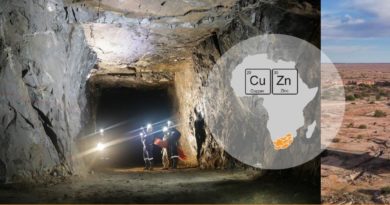TIN: Cornish Metals expands exploration prospects at South Crofty
Cornish Metals has reached agreement to lease mineral rights in an area with “significant exploration potential”, expanding the already promising South Crofty Project.
The South Crofty mine has been closed since the late 1990s, but Cornish Metals has been working to bring the mine back into production since 2016 when it acquired the rights. The company was recently subject to a £40 million investment to progress work at the mine. Cornish Metals plans to dewater the existing mine infrastructure before publishing a Feasibility Study for the project.
The Feasibility Study will focus on the South Crofty Underground Permission Area (SCUPA) – where Cornish Metals would be allowed to mine – but there is significant potential outside of this. Historical mining took place in the South Carn Brea Exploration area, just to the south of the SCUPA. Cornish Metals will look to investigate the Great Flat Lode, a formation of high-grade tin mineralization as well as the Wide Formation, a tin-bearing structure believed to lie beneath and to the north of the Great Flat Load.
Cornish Metals already had the mineral rights for much of this area. However, certain regions are owned by Roskear Minerals LLP. In the recent announcement, Cornish Metals agreed to lease this area from Roskear, enabling new exploration and potential mining in the area.
The Prospective Lease on the 49-hectare area is for five years, with the option to extend for a further five years if required. If successful targets are found, this can be converted to a Mining Lease at any time during the lease period. An annual rent will be paid to Roskear for the Prospective Lease, with a tin price-based sliding net smelter return royalty on any mineral production under the potential Mining Lease.
The dewatering of the existing infrastructure at South Crofty is expected to take 18 months in total. The process will be completed in two stages, allowing Cornish Metals to begin drilling in the mine as access to the lower levels in regained. However, during the first stage, there is little Cornish Metals can do in the SCUPA. Therefore, the company is working to expand the resource potential in the area, with work being completed at United Downs and more locally around South Crofty
Tantalex gets the go-ahead for its TiTan project, DRC
Tantalex Lithium Resources has been awarded a mining license for its TiTan project in the Manono region of the DR Congo.
The TiTan project sits in the Manono “pegmatite corridor”, some 30km southwest of Manono, a mining site that was exploited for cassiterite and columbite-tantalite between 1913 and the 1980s. Recent work suggests that the mineralisation extends southwest of the mine; Tantalex plans to work on this previously untapped potential.
The company has been working to progress the project quickly. Already, the concentration plant has been tested in Manono and is ready for assembly on site. Production is scheduled to commence in March 2023, with output forecast at 120tpm tin concentrate and 20tpm tantalum concentrate.
Tantalex is also developing the Manono Tailings project, which plans to rework the waste from the historic mine to recover lithium and tin.
TiTan is likely to be a small-scale, low cost, highly mobile operation – well suited to the challenges of the modern mining space. Although this project itself won’t help tip the balance of the tin market, according to Tantalex Chairman Hadley Natus, “this is likely only the first of many more that we will install”.
TiTan could be the pilot plant of a series of operations, which could help to reduce the forecast shortfall in the tin market this decade.
TIN: Cornish Metals expands exploration prospects at South Crofty
Cornish Metals has reached agreement to lease mineral rights in an area with “significant exploration potential”, expanding the already promising South Crofty Project.
The South Crofty mine has been closed since the late 1990s, but Cornish Metals has been working to bring the mine back into production since 2016 when it acquired the rights. The company was recently subject to a £40 million investment to progress work at the mine. Cornish Metals plans to dewater the existing mine infrastructure before publishing a Feasibility Study for the project.
The Feasibility Study will focus on the South Crofty Underground Permission Area (SCUPA) – where Cornish Metals would be allowed to mine – but there is significant potential outside of this. Historical mining took place in the South Carn Brea Exploration area, just to the south of the SCUPA. Cornish Metals will look to investigate the Great Flat Lode, a formation of high-grade tin mineralization as well as the Wide Formation, a tin-bearing structure believed to lie beneath and to the north of the Great Flat Load.
Cornish Metals already had the mineral rights for much of this area. However, certain regions are owned by Roskear Minerals LLP. In the recent announcement, Cornish Metals agreed to lease this area from Roskear, enabling new exploration and potential mining in the area.
The Prospective Lease on the 49-hectare area is for five years, with the option to extend for a further five years if required. If successful targets are found, this can be converted to a Mining Lease at any time during the lease period. An annual rent will be paid to Roskear for the Prospective Lease, with a tin price-based sliding net smelter return royalty on any mineral production under the potential Mining Lease.
The dewatering of the existing infrastructure at South Crofty is expected to take 18 months in total. The process will be completed in two stages, allowing Cornish Metals to begin drilling in the mine as access to the lower levels in regained. However, during the first stage, there is little Cornish Metals can do in the SCUPA. Therefore, the company is working to expand the resource potential in the area, with work being completed at United Downs and more locally around South Crofty
Tantalex gets the go-ahead for its TiTan project, DRC
Tantalex Lithium Resources has been awarded a mining license for its TiTan project in the Manono region of the DR Congo.
The TiTan project sits in the Manono “pegmatite corridor”, some 30km southwest of Manono, a mining site that was exploited for cassiterite and columbite-tantalite between 1913 and the 1980s. Recent work suggests that the mineralisation extends southwest of the mine; Tantalex plans to work on this previously untapped potential.
The company has been working to progress the project quickly. Already, the concentration plant has been tested in Manono and is ready for assembly on site. Production is scheduled to commence in March 2023, with output forecast at 120tpm tin concentrate and 20tpm tantalum concentrate.
Tantalex is also developing the Manono Tailings project, which plans to rework the waste from the historic mine to recover lithium and tin.
TiTan is likely to be a small-scale, low cost, highly mobile operation – well suited to the challenges of the modern mining space. Although this project itself won’t help tip the balance of the tin market, according to Tantalex Chairman Hadley Natus, “this is likely only the first of many more that we will install”.
TiTan could be the pilot plant of a series of operations, which could help to reduce the forecast shortfall in the tin market this decade.




